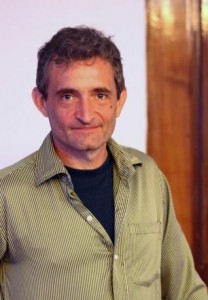 Toonz Animation India’s Animation Masters Summit recently concluded with much fanfare in Thiruvananthapuram, Kerala. One of the masters – creative director at DDU Bengaluru Philippe Gluckman – had flown in from Bengaluru to take a special behind the scenes session on DreamWorks Animation’s last year’s release Penguins of Madagascar.
Toonz Animation India’s Animation Masters Summit recently concluded with much fanfare in Thiruvananthapuram, Kerala. One of the masters – creative director at DDU Bengaluru Philippe Gluckman – had flown in from Bengaluru to take a special behind the scenes session on DreamWorks Animation’s last year’s release Penguins of Madagascar.
“The vibrant culture here lends itself to creativity. There is a large native talent pool in animation here, which I have witnessed in my seven years so far. Cost-effectiveness is also a major factor for more work coming into the country,” revealed Gluckman to AnimationXpress.com.
When DreamWorks Studios first planned on setting shop in other markets, it zeroed in on Bengaluru for India way-back in 2008. In the initial days of the DreamWorks Dedicated Unit in Bangalore, the team was producing animated commercials. TV specials, high-quality material produced exclusively for television, happened later. Just six years later, in 2014, they produced their first full-length feature Penguins of Madagascar.
“Making major parts of Puss in Boots here was a big deal for us. With Penguins, we took things to the next level. We worked right from building the characters, the look of the film, to the production phase. Though we planned to produce the entire film here, the last part had to be shifted out owing to scheduling issues; so there were 21 sequences that were done here and the other 9 back in US,” he added.
Gluckman is currently working with a young team of 240, a majority of whom are from India. “The only trouble out here is the different timelines of US and India. People are very welcoming and warm. I am also interested in learning languages.”
He feels that some of the animation films being produced internationally follow a formula. “In the initial days, we were making very ambitious expensive films. But, we have to move beyond this one model of making animation films. We now have more diverse markets, and we have to make targeted films.”

